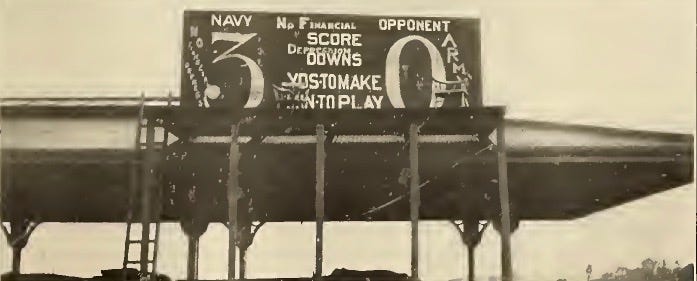Today's Tidbit... Getting A Kick Out Of The Second Half
With the release of my new book this morning, I will have a chance to step back and research some issues that have been on the back burner, including the tension between innovation and oddity. The innovation versus oddity idea is that the football community accepts some new techniques or approaches, which are considered innovations. Despite being within the rules, other “innovations” are rejected, and the rules are revised to block them going forward. The rejected elements become viewed not as innovations but as oddities. The Reverse Center covered recent article is an example of an oddity.
Related to oddities are suggested rule changes the game did not adopt, such as where and how to start the second half. Since 1894 and under normal circumstances, the team that kicks off in the first half receives the ball in the second half. That has been the norm for so long that most have not considered an alternate method. However, from the mid-1890s to the 1940s, some argued the team possessing the ball at the end of the first half should start the second half at the same spot. (The location would be adjusted for the change in direction, just as it occurs between quarters).
The thinking was that if Team A had the ball deep in opposing territory when the first half ended, they should benefit from their first-half success at the start of the second half. Likewise, if Team B had the ball deep in their territory when the half ended, Team A should benefit from having held them there. Of course, while the idea may seem odd, it's a perfectly logical approach, given that all game rules are arbitrary. In addition, during much of the time they considered this rule change, few stadiums had scoreboard clocks, quarterbacks could not spike the ball, and clock management was a less critical element of the game.
One benefit of starting the second half where the first half ended would be the elimination of a kickoff, an injury-filled play even with the current fair catch component. However, it would dramatically affect the end-of-the-first-half strategies and eliminate much of the pressure and drama that has become a part of today's game and the two-minute drills that emerged around 1960.
Football Archaeology is reader-supported. Click here to buy one of my books or otherwise support the site.



